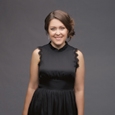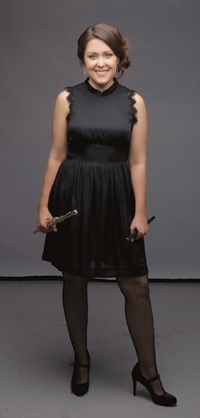 Since 2011, Jennifer Bouton Schaub has played piccolo and flute in the Milwaukee Symphony. For the past two seasons she has also been the acting second flute with the Lyric Opera of Chicago. She shares her insights into piccolo performance based on her experience in both the symphonic and operatic fields.
Since 2011, Jennifer Bouton Schaub has played piccolo and flute in the Milwaukee Symphony. For the past two seasons she has also been the acting second flute with the Lyric Opera of Chicago. She shares her insights into piccolo performance based on her experience in both the symphonic and operatic fields.
How do you care for your wooden piccolo?
I have had some trouble in recent years managing my instrument through the extreme winters of Chicago and Milwaukee. When I was living on the east coast, I did not think about maintenance much at all because those climates are humid enough to keep the piccolo relatively stable. When I moved to the Midwest, it changed quite a bit. First I started keeping orange peels in my case for a little extra humidity, but one winter, with temperatures in the negative double digits, even that was not enough. The mechanism of my piccolo started binding during a concert, the whole right hand would not play at all. My repairman, Tom Peterson, recommended a fantastic solution. He told me to find a large glass or plastic bowl with a lid that would seal securely. It should be big enough to fit the piccolo laying lengthwise about halfway into the bowl; in other words, resting above the bottom, not on the bottom of the bowl. He told me to then place a damp cloth or sponge on the bottom of the bowl, not touching the piccolo at all, and seal the container overnight. It works amazingly well, restoring the moisture in the wood and resolves most weather related binding issues. I do this only in extremely dry, cold conditions, but still keep the orange peel in the case for most of the fall and winter. I have tried using tiny, 1/8 size violin dampits in the case (never place a dampit inside the piccolo as it can easily crack) but that was a little bit too much. For me, the orange peel is just right.
Do you wear one or two ear plugs?
In extremely loud passages where the entire orchestra is playing and I am playing in the highest register, I use two earplugs. Normally, I wear one in my left ear, if at all. I have custom earplugs that are designed to allow musicians to hear enough of the timbre and intonation to be comfortable, but block the damaging frequencies. I still prefer to play without them but know enough musicians with permanent hearing loss to feel that the protection is worth the slight change in my perception of the sound.
What alternate fingerings do you use on a regular basis?
C, C#, and D above the staff can be tricky for blend and intonation. I use the alternate C# above the staff any time I double with the Eb clarinet, or something soft that is unison with the flutes.
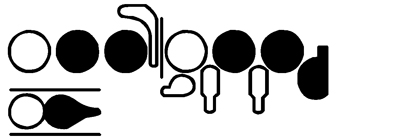
0 2 3 0 / 0 2 3 4
Thumb
The D above the staff is used for similar situations. Both fingerings bring the pitch up and smooth out the sound so it is easier to blend.
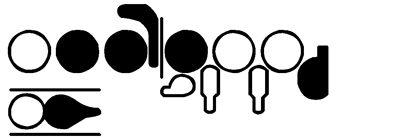
0 2 3 4/ 1 0 0 4
Thumb
I also use an alternate C above the staff for things with trumpet, and occasionally oboe.
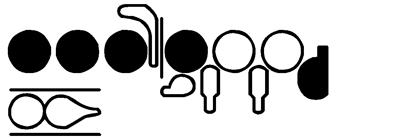
1 2 3 0/ 1 0 0 4
No thumb
It is slightly higher but mostly makes the sound more opaque, and I find it often works better with those very direct timbres. For very soft B above the staff, I use the low D fingering without the thumb. It is very stable and in tune at a pp dynamic, but the color changes quite noticeably. I only use this when I am sure that it will not be apparent. With all of these fingerings, it is important to use them selectively. If you played these four fingerings one after another, any improvement in the intonation would be lost because the color changes would be so awkward.
How do you warm up?
I usually warm up on flute first, so by the time I get to piccolo I do not do a ton of exercises. I like to play through a few quick technical etudes, like those in the Patricia Morris or Trevor Wye piccolo books. Some of them, like the first one in The Piccolo Study Book (Morris), are scalar enough to memorize and transpose to different keys. That is a great exercise to get the air flowing and cover all of the registers. I also love to play octave diminuendos or five-note scales in the high register, striving to keep my embouchure sensitive and focused, but relaxed.
Do you have any tuning tricks when playing in an orchestra?
Unfortunately not really – you just have to listen. It helps to play confidently. Even if you are out of tune with someone you can better determine how to fix the problem if you are using your real sound and playing with musicality than if you are covering and pinching because you are afraid of sounding bad.
What are your thoughts on vibrato when playing the piccolo vs. the flute?
As with the flute, piccolo vibrato should always exist within the sound. You never want to use a vibrato that overwhelms the tone and distorts the pitch. Generally speaking, piccolo vibrato should be narrower, and possibly faster than flute vibrato. This does not mean you cannot utilize the full range of vibrato speeds and depths as an expressive tool for the piccolo, but that the overall sense of the vibrato should be adjusted to fit the register and tonal capacity of the smaller instrument. Since intonation can be so touchy on the piccolo, it is important to remember that vibrato is, by its nature, a variation in the pitch. Therefore, make sure the vibrato does not disproportionately emphasize the upper part of the wave or else it will sound sharp and shrill. (Likewise, an especially slow and droopy vibrato on the piccolo can give the sense that it is flatter than it would be without any vibrato at all).
What are the top excerpts piccolo players should know well?
They should know Tchaikovsky’s Symphony No. 4, Bartók’s Concerto for Orchestra, Rossini’s Semiramide Overture; Beethoven’s Symphony No. 9, Berlioz’s La damnation de Faust, Ravel’s Ma mère l’oye and Bolero, and the Shostakovich symphonies. There are many other important excerpts in the repertoire, but these excerpts are on every piccolo audition list, and many flute lists as well.
Which piccolo players have influenced your playing?
I was fortunate to take Laurie Sokoloff’s Piccolo Excerpt Class while getting my undergraduate degree at Peabody. I learned how to play the majority of the orchestral excerpts in her class, and it was absolutely invaluable. I did not formally study piccolo with anyone but I have had the pleasure of playing for Jennifer Gunn occasionally in Chicago and have enjoyed working with Alyce Johnson in Lyric Opera.
Jennifer Bouton Schaub has played piccolo and flute with the Milwaukee Symphony since 2011 following three seasons with the Virginia Symphony. For the 2014/15 and 2015/16 seasons, she also performed as acting second flute with the Lyric Opera of Chicago. She has performed with the Detroit, Colorado, Akron, and Albany symphonies and has participated in numerous festivals, including the National Repertory Orchestra, Aspen Music Festival, Sunflower Music Festival, Arizona Music Festival, AIMS Summer Festival Orchestra in Graz, Austria; and the Internationale Meisterkurze für Musik in Zurich, Switzerland. In 2012, she was a prize winner in the International Piccolo Artist Competition at the NFA Convention in Las Vegas. Schaub received a Master of Music degree and Certificate in Advanced Flute Studies from Carnegie Mellon University, and a Bachelor of Music degree from the Peabody Conservatory. Her teachers include Jeanne Baxtresser, Alberto Almarza, Marina Piccinini, and Pamela Endsley.
